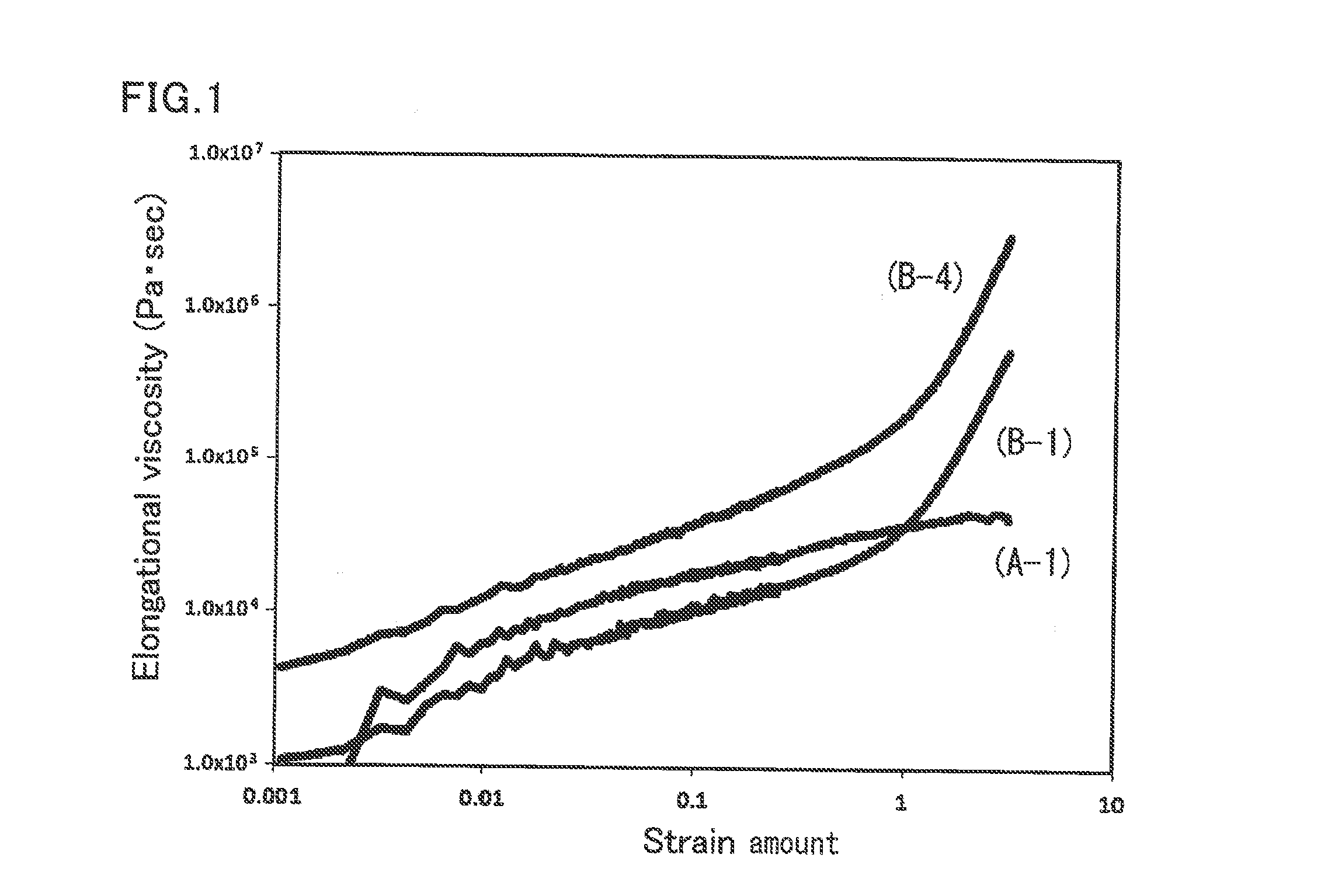Polypropylene-based resin sheet and formed object
a polypropylene resin and formed object technology, applied in the field of polypropylene resin sheet and formed object, can solve the problems of deterioration of appearance, insufficient heating of sheets, wrinkle formation in formed products, etc., and achieve the effect of increasing the forming temperature, and reducing the mfr of the base material
- Summary
- Abstract
- Description
- Claims
- Application Information
AI Technical Summary
Benefits of technology
Problems solved by technology
Method used
Image
Examples
example 1
[0101]90 parts by weight of the resin (A-1) as a polypropylene resin (A) and 10 parts by weight of the resin (B-1) as a modified polypropylene resin (B) were pellet-blended to give a mixture. The mixture was melt-kneaded in a (p 40 mm single screw extruder set at 230° C., and then extruded through a T-die attached to the tip, and the extrudate was taken up with cooling using chill rolls to obtain a 1.0 mm-thick resin sheet. Table 2 shows the evaluation results of the resin sheet with the elongational viscosity ratio at a strain of 3.
example 5
[0104]A resin sheet was prepared as in Example 1, except that 90 parts by weight of the resin (A-2) as a polypropylene resin (A) and 10 parts by weight of the resin (B-2) as a modified polypropylene resin (B) were used. Table 3 shows the evaluation results of the resin sheet with the elongational viscosity ratio at a strain of 3.
PUM
| Property | Measurement | Unit |
|---|---|---|
| Temperature | aaaaa | aaaaa |
| Temperature | aaaaa | aaaaa |
| Weight | aaaaa | aaaaa |
Abstract
Description
Claims
Application Information
 Login to View More
Login to View More - R&D
- Intellectual Property
- Life Sciences
- Materials
- Tech Scout
- Unparalleled Data Quality
- Higher Quality Content
- 60% Fewer Hallucinations
Browse by: Latest US Patents, China's latest patents, Technical Efficacy Thesaurus, Application Domain, Technology Topic, Popular Technical Reports.
© 2025 PatSnap. All rights reserved.Legal|Privacy policy|Modern Slavery Act Transparency Statement|Sitemap|About US| Contact US: help@patsnap.com

